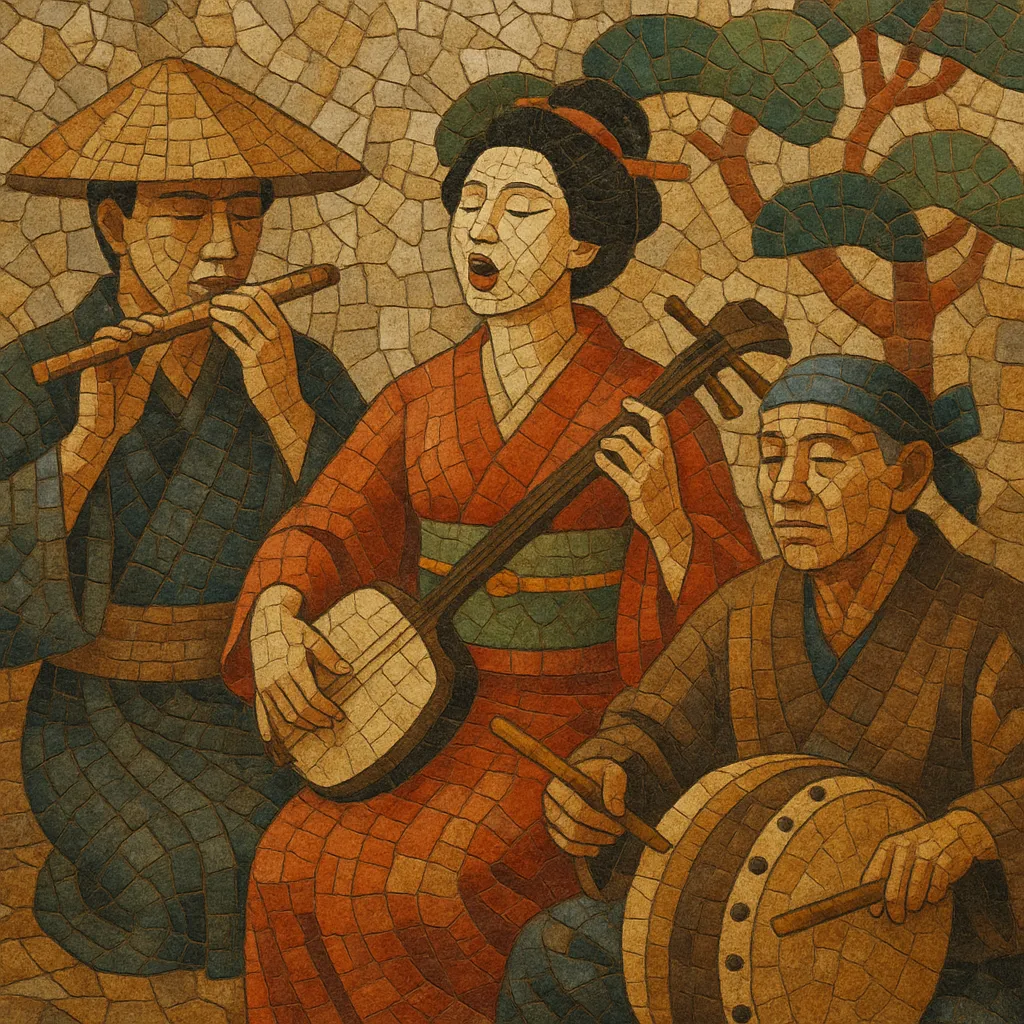Japanese folk music (min'yō and related regional traditions) is the collective body of vernacular song and instrumental practices that arose among Japan’s rural and coastal communities.
It includes work songs (rice-planting, fishing, sake-brewing), festival and dance songs (Bon-odori), travelers’ and boatmen’s songs, lullabies, and ritual/seasonal chants.
Melodies commonly draw on pentatonic collections such as the yo and in scales, and are richly ornamented with kobushi (vocal turns) and flexible timing shaped by ma (intentional silence/space). Textures are largely monophonic or heterophonic, with unison singing doubled by instruments like shamisen, fue (transverse bamboo flutes), shakuhachi, and sometimes koto; taiko and local percussion support dance and procession contexts. Regional styles (e.g., Tsugaru in the north, Amami in the south, Okinawa and Ainu traditions) contribute distinctive timbres, rhythms, and repertories that together define the breadth of Japanese folk expression.
Japanese folk music coalesced from agrarian, fishing, and itinerant traditions long before written documentation, but many of its recognizable forms crystallized during the Edo period (1603–1868). Village festivals, local guilds, and pilgrimage routes facilitated the circulation of tunes and verse, while occupational songs preserved practical rhythms for collective labor and communal identity.
In Edo times, commercial cities and waystations fostered professional and semi-professional performers, while instruments like shamisen and fue became widespread. After the Meiji Restoration (1868), modernization and internal migration carried regional repertories into urban theaters and cafés, where they were heard alongside new popular forms.
In the Taishō and early Shōwa eras, collectors, broadcasters, and record companies documented and popularized min'yō. Ryūkōka (early Japanese popular song) and later kayōkyoku selectively absorbed folk scales, melodies, and vocal inflections, bringing rural idioms into urban entertainment. Festival musics (Bon-odori, matsuri-bayashi) likewise adapted to changing civic contexts.
Post–World War II saw organized preservation movements, local competitions, and the emergence of virtuoso strands like Tsugaru-jamisen, which reframed accompaniment idioms as dazzling solo art. Okinawan and Ainu musicians asserted distinct indigenous repertories within the broader Japanese folk umbrella. In parallel, shin min'yō ("new folk songs") composed in folk idioms entered community repertoires through radio and schools.
Since the late 20th century, taiko ensembles, shamisen soloists, and folk singers have toured globally, while pop, rock, and jazz artists continue to integrate min'yō scales, rhythms, and storytelling. Archives, festivals, and local associations sustain living traditions, ensuring regional identities and seasonal rituals remain audible within Japan’s contemporary soundscape.
For work and dance songs, use steady, bodily rhythms (2/4 or 4/4) appropriate to motion (planting, rowing, Bon-odori steps);
for narrative or lullabies, allow freer pulse and elastic phrasing.
•Structures are often strophic with refrain; responsorial patterns (leader–chorus) are common.


